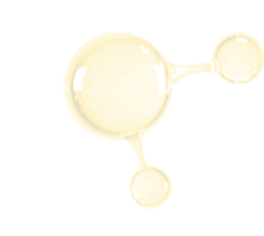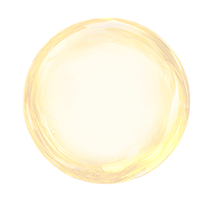Weeks 1-2 of Baby's 1st Year:
The baby has turned one! Don't forget to take first birthday commemorative photos~ At this time, the baby is in the "transition stage" of the toddler period. Some can walk independently, while others remain "obsessed" with crawling—both are normal. However, if the baby still can't stand alone, consult a doctor to find the cause. In terms of diet, besides complementary foods, dairy remains essential daily. A 13-month-old baby needs about 300-500 ml of milk daily. If breast milk is insufficient, consider formula with OPO structural fat and probiotics, which mimics breast milk and is easier to digest.
Notes on Mixed Feeding
1) Breast milk is the ideal food for babies
Breast milk not only naturally contains most nutrients a baby needs but also immune substances, preventing infectious diseases, promoting immune system development, reducing allergic diseases, and positively impacting chronic conditions like obesity and diabetes in adulthood. Thus, exclusive breastfeeding is recommended for 6 months; if insufficient, combine with OPO-structured formula. Generally, pure cow's milk and other dairy products are not recommended before age 3 due to large protein molecules hard to digest and higher protein/mineral ratios than human milk, straining the baby's kidneys.
2) Pay attention to mixed feeding methods
Which mixed feeding method should be used after age 1?
① Supplemental feeding: Let the baby suck breast milk first. After both breasts are empty, add formula if not full. Suitable for babies under 4 months.
② Substitute feeding: Alternate between breast milk and formula. More suitable for babies over 1 year, as it gradually reduces breast milk, helping transition to three meals and preparing for complete weaning.
3) Control the baby's milk intake
1-year-olds need 300-500 ml of milk daily. If breast milk is insufficient, supplement with formula, but don't let milk dominate meals. Gradually train the baby to accept regular food to absorb rich nutrients/energy and exercise chewing and digestive functions.
Weeks 3-4 of Baby's 1st Year:
1-year-olds show significantly enhanced motor skills. Whether walking along the sofa or crawling everywhere, they explore the world with curiosity, expanding their "territory." Besides supervising, parents should clear the home environment for free movement. The baby starts to develop independence—insisting on taking the spoon to eat, playing with toys alone, or pushing away parents' hands. These reflect natural growth. However, as the baby's activity range expands, the risk of bacterial/viral exposure increases. Parents should monitor body temperature for fever symptoms.
Notes on Mixed Feeding
1) Baby fever: When to seek immediate medical attention
Baby fever is an external sign of inflammation from bacterial/viral infection. After discovering fever, handle as follows:
l For babies aged 6 months to 2 years, if only slightly listless when feverish but play/eat normally after cooling, observe first. If fever lasts over 24 hours, seek medical help.
l If the baby's temperature exceeds 38.5°C, take infant-specific fever reducers as prescribed—never use adult medication. If fever is accompanied by rapid breathing or wheezing, seek immediate medical attention.
l For any age, if fever lasts over 3 days, consult a doctor immediately.
2) Correct care methods for a feverish baby
l Closely observe the condition: Note the baby's reactions, check for other symptoms like rapid breathing, monitor temperature, and take cooling measures promptly.
l Ensure adequate sleep: Fever consumes energy quickly, requiring more sleep than usual—avoid disturbing the baby's sleep excessively.
l Guarantee water intake: Fever consumes much water, so ensure the baby drinks enough. Prepare slightly sweet/sour meals to increase the willingness to drink water.
l Dietary notes: Fever affects digestion/absorption—avoid oily/hard-to-digest foods. Temporarily stop milk feeding, switch to easily digestible semi-liquids/liquids like mashed noodles or rice porridge. If fever is caused by gastroenteritis and the baby is prone to vomiting, feed while sitting up with the head tilted to prevent choking from sudden vomiting.
Weeks 5-6 of Baby's 1st Year:
When the baby reaches 1 year and 2 months, parents may notice a clear change: the cute baby fat gradually disappears, and the figure becomes slimmer, seemingly "thinner." No need to worry—if the baby eats normally and height/weight are within standards, it's normal. The baby now has more skills: faster crawling, steadier walking, agile movements, and can bend to pick up objects without falling. The most significant progress is eating with a spoon independently. Parents should encourage this, not minding messy clothes or spilled food. Of course, if the baby is obsessed with "wasting" food, temporarily remove the bowl, but never take the spoon away to avoid discouraging independent eating.
Complementary Food Addition After Age 1
Strictly speaking, after age 1, the baby's diet should gradually focus on regular food with milk as a supplement. Thus, "complementary food" essentially becomes "staple food," though the term "complementary food addition" is still used out of habit.
1) After age 1: Proportion of complementary food and milk
From age 1, complementary foods should be the main energy and nutrient source. Parents should ensure diverse foods for balanced nutrition. The Dietary Guidelines for Chinese Residents (2016 Edition) states that 13-24-month-old toddlers get about 1/2 to 2/3 of their energy from complementary foods. Therefore, avoid excessive milk intake that may affect three meals.
However, maintain 300-500 ml of milk daily—breast milk or formula. Choose formula with α+β innovative formula, OPO structural fat, lactoferrin, probiotics, and other nutrients, which mimic breast milk and help enhance the baby's immunity.
2) Ensure food diversity and add animal-based foods
Daily food intake reference for 1-year-olds: 300-500 ml milk, 1 egg, 50-75 g meat or fish (chicken, pork, beef, mutton, shrimp, etc.), 50-100 g grains (staples like rice noodles, thick porridge, soft rice, broken noodles), plus appropriate soy products, vegetables, and fruits as needed.
3) Cooking principles for 1-year-olds' food
Cooking for 1-year-olds should follow the principles of less sugar, salt, and oil—no seasonings. Choose steaming, boiling, stewing, etc., avoiding frying. Minimize pickled, smoked, braised, oily, and sweet foods. Control high-sugar/salt snacks and avoid unsafe snacks like jelly, plum, candy, etc., which may cause choking.
4) Encourage independent eating and try family food
Train the baby to eat independently and encourage dining with family, gradually trying light-flavored family food. 1-year-olds can scoop food with a spoon but often spill—no need to worry. By 1.5 years, they can eat about half independently, and by age 2, use a spoon proficiently.
Weeks 7-8 of Baby's 1st Year:
Now the baby can actively call "Daddy" and "Mommy." When walking, if seeing a favorite toy on the ground, they will squat to play first, then stand up and continue walking. Hand-eye coordination further improves—they can take food to eat and try dressing, putting on socks, etc. When the baby plays with peers, parents may compare heights and weights. Generally, a 1-year-old's weight is about three times the birth weight. Of course, standard weights for different months can be accurately calculated by formula: birth weight plus month age multiplied by 0.5. The height range for 1-year-old baby boys is 68.6 to 85 cm, averaging 76.5 cm; for baby girls, 67.2 to 83.4 cm, averaging 75 cm. Parents can judge if their baby meets the standards accordingly.
Feeding Characteristics of 1-Year-Olds
1) Do not reduce milk intake
Regardless of complementary foods, the daily intake of breast milk or formula should not be less than 500 ml. For mixed feeding or weaning, choose OPO-formula milk powder that mimics breast milk, which is easy to digest/absorb and meets comprehensive nutritional needs for growth. Additionally, 1-year-olds can try switching from stage 2 to stage 3 formula, mainly suitable for 1-3-year-olds.
2) Balanced diet
A comprehensive and reasonable food combination is crucial for the baby's growth. Parents should try to include high-quality proteins (fish, eggs, poultry, dairy products), grains (potatoes, rice, bread, pasta), and fresh fruits and vegetables.
3) Train the baby's chewing ability
Letting the baby practice chewing not only benefits gastrointestinal development but also helps tooth eruption and craniofacial bone/muscle development. When preparing complementary foods, in addition to following the principles of complementary food addition (from thin to thick, particles from fine to coarse), parents should demonstrate correct chewing movements to the baby.
4) Respect the baby's eating habits
Parents should not overly demand the baby to eat a fixed amount per meal or compare food intake with peers. The baby is gradually forming individual eating habits—some like to eat 70-80% full, others 100%, eating more of favorite foods and less of disliked ones. Parents need to respect individual differences.

 En
En Member Login
Member Login Contact
Contact







